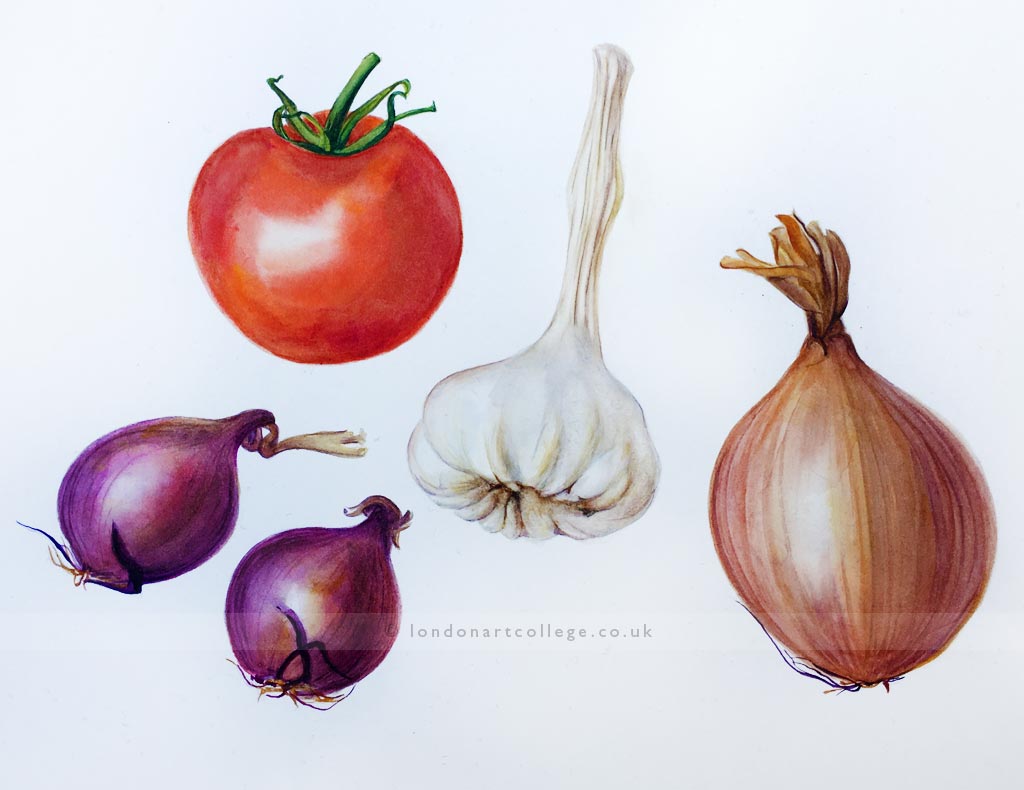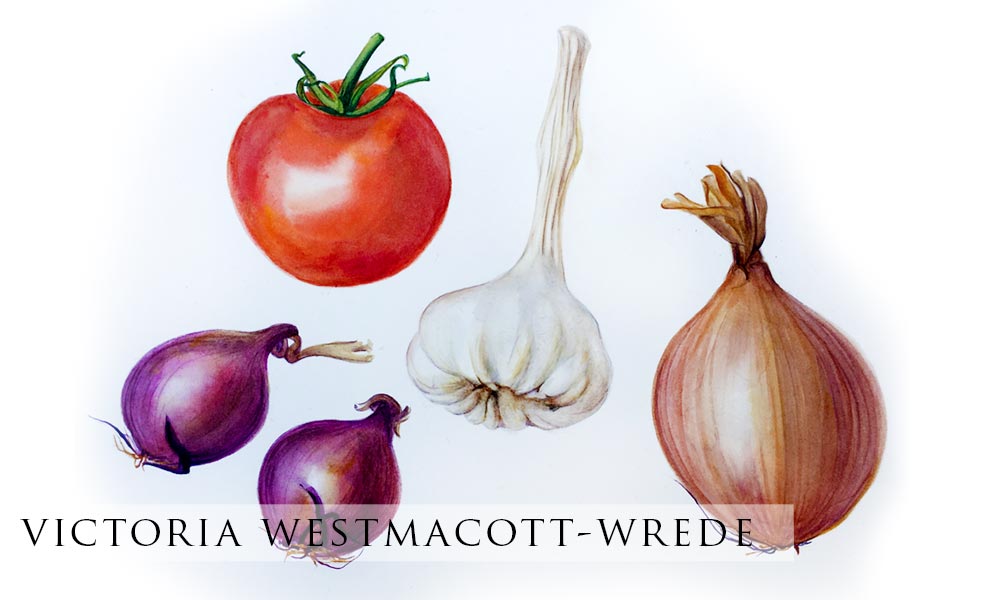Victoria Westmacott-Wrede has created a beautiful set of watercolour fruit and veg for one of her assignments on the Botanical painting course. She explains below how she painted each one and the colours she used. We thought that would students would be extremely interested in reading how Victoria went about creating her artwork and we hope that you find it inspiring!

Tomato: I began as with the apples, i.e. glazes of clear water into which I dropped Sen. Indian Yellow and warm red, i.e. Sen. Red plus some Sen. Lemon Yellow, spreading the paint and leaving out the highlights. I did not use feathering or dry-brushing at all with the tomato but only wet-in-wet glazes. I began introducing darker red and a hint of purple, as with the apples, but did not dull the purple-red as much as with the apples by adding a hint of green. The green stalk and leaves were built up by first using Sen Yellow with a hint of Phtalo-Green and later darkening the greens with more blue and a bit of red.
Red onions: These first received a glaze with warm Yellow as above and later I added glazes with warm red (Sen- Red, a tiny bit if Sen.Lemon Yellow added), purples, i.e. Sen. Helios Purple and more so Sen. Dioxazine Purple. In between I used the tip of my brush to put in lines and to give the impression of the stripy texture. Then I glazed over the stripes again. The warm yellow is still visible in he centre and I felt that I also saw this in all onions. The onion on the left has a greyish colour at the top on the left by adding a bit of Sen. Quinacridone Gold. The stalk and some of the roots were also painted with Sen- Quin. Gold, which I broke a little bit with purple on my pallet. The skin of the onions had opened a little bit leaving a crack, which was much darker than the top layer of the skin. I am not sure whether I succeeded in showing this…
Golden Onion: While beginning to paint the apples and other vegetables I ad already discovered that Sen. Quinacridine Gold seemed a wonderful colour for this onion. Nevertheless I again began with a glaze of Sen. Indian Yellow, again I had the impression that this warm yellow should lie underneath further layers. I then continued with glazes and with also adding stripes with the tip of my brush, alternating with glazes. Here I introduced Sen- Quinacridone Gold and I broke this with Sen- Dioxazin Purple in the shadowy parts. The whole onion was really painted with just these three colours, even the bits of leaves at the top.
Garlic: This was a bit of a challenge and maybe it is not totally successful. Again the texture was important to me. I used little colour compared to the other vegetables, leaving parts almost without colour. There were shadows where the cloves inside the garlic sit as well as a warm yellow on the left side and the stalk also seemed to have a hint of warm yellow with shadowy lines in the creases. For warm yellow I used Sen. Indian Yellow and this I mixed with Sen. Dioxazin Purple for the grey shadows. The brown underneath the garlic also had some Sen-Quinacridone Gold to mix the brown – so very few colours were used her.
Victoria Westmacott-Wrede
Botanical Painting Diploma Course

